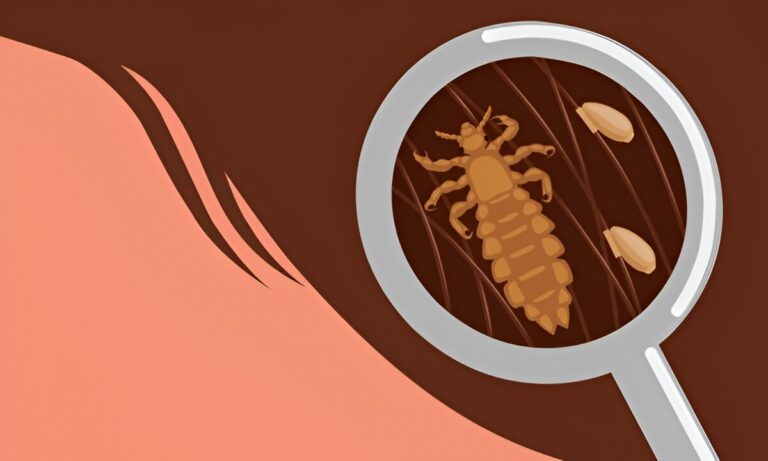Parasitic skin infections probably aren’t what you think of when considering skin problems, but they happen a lot more than people know. Mites, lice, and worms are just a few of the parasites that can cause these infections. They can make your skin uncomfortable and itchy, and if you don’t deal with them, they can lead to bigger health issues. Knowing what these infections are about, what causes them, the symptoms to watch for, and how to treat them can help you take better care of your skin.
Understanding Parasitic Skin Infections
Parasitic skin infections aren’t something most people think about when considering skin problems, but they happen more often than you might expect. Different types of parasites, like mites, lice, and worms, can cause these infections. They can be uncomfortable and irritating, and if you don’t treat them, they might even lead to more serious health issues.
Basically, these infections happen when parasites invade your skin and snack on your body’s resources. Some of these pests, like scabies mites, are so tiny you can’t see them, while others, like lice, are larger and easy to spot. Your skin usually acts like a shield, but when these parasites break through, it can mess with how your skin works and cause infections. Anyone can get these infections—there’s no specific group that’s safe, so age, gender, or hygiene doesn’t really matter.
Causes of Parasitic Skin Infections
Parasitic skin infections typically happen from being around parasites in different settings. Take scabies, for example; it’s caused by a mite that digs into your skin. Lice spread mainly through close contact or by sharing things like hats or combs. Hookworms are another case where the larvae can enter your skin, often when you walk barefoot on contaminated ground. Living in dirty places, being in crowded areas, and not keeping clean raise the chances of getting these infections. Knowing what leads to these issues can help people take steps to avoid getting infested.
Common Types of Parasitic Skin Infections
Parasitic skin infections mainly happen when people come into contact with parasites in different settings. For example, scabies is caused by tiny mites that dig into the skin, while lice often spread through close contact or by sharing personal items like hats or combs. Some infections, like those from hookworms, can happen when larvae get into the skin—often when walking barefoot on contaminated ground. Living in unsanitary conditions, being in crowded places, and not practicing good hygiene can raise the chance of getting these infections. By knowing what causes these infections, people can take steps to avoid them.
There are a few common types of parasitic skin infections, each caused by different parasites. Scabies is well-known for causing severe itching and rashes because of the mites. Lice infestations, like head lice, body lice, and pubic lice—are common, especially in kids and teens. Another type is cutaneous larva migrans, which happens when hookworm larvae enter the skin and create itchy, winding lines. Each condition has its own signs and needs specific treatment.
Symptoms of Parasitic Skin Infections
Parasitic skin infections have different symptoms depending on the type of parasite. You might experience a lot of itching, redness, swelling, or rashes on your skin. For scabies, the itching usually gets worse at night. If you have lice, you might see nits or adult lice in your hair. Cutaneous larva migrans shows up as red, itchy lines that seem to move under your skin. It’s important to recognize these signs early, since catching them quickly can help with treatment and stop the infection from spreading to others.
Diagnosis of Parasitic Skin Infections
To diagnose a parasitic skin infection, a doctor usually does a careful exam. They’ll want to know about your symptoms, medical history, and if you’ve been around any parasites. Sometimes, they might take a skin scrape or sample to look at it under a microscope. Getting the right diagnosis is really important because it helps determine how to treat it. A wrong diagnosis can lead to treatments that don’t work, so it’s a good idea to see a healthcare provider if you think you have a parasitic infection.
Treatment Options
Treatment for skin infections caused by parasites depends on what kind of infection it is and how bad it is. For issues like scabies and lice, doctors usually recommend creams or lotions with permethrin or benzyl benzoate. If the infection is more serious, you might need oral meds. It’s also a good idea to wash your clothes, bedding, and personal stuff in hot water to get rid of any remaining parasites. Sometimes, doctors may suggest antihistamines to help with itching and swelling. Sticking to the treatment plan is really important to get rid of the infection.
Prevention Tips
To prevent skin infections caused by parasites, it’s important to keep good hygiene and be aware of risks. Wash your hands often, keep your living space clean, and try to avoid close contact with people who have known infestations. If you’re in crowded places like schools or daycare centers, be careful with personal items—don’t share combs, hats, or anything like that. Wearing shoes in areas where hookworm larvae might be around can help too. Knowing the signs and symptoms of these infections can help you act quickly if you do get infected.
Complications and Long-term Effects
Most parasitic skin infections can be treated pretty well, but if you don’t take care of them, things can get worse. Constant itching can lead to bacterial infections, which might need extra treatment. Sometimes, being around certain parasites for too long can cause serious skin problems or other health issues. For example, if scabies isn’t treated, it can become crusted scabies, which is tougher to deal with. That’s why it’s important to get medical help as soon as you notice any signs of a parasitic skin infection.
Conclusion
Skin infections caused by parasites might not sound appealing, but they affect a lot of people. Knowing what causes them, how to spot the symptoms, and what treatments are available can help you and those around you stay safe. By being aware and informed, you can prevent these infections and get help when you need it. Healthy skin is important for feeling good overall, and understanding this is the first step in taking care of it.




Leave a Comment